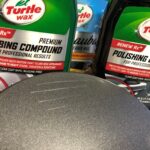For automotive enthusiasts seeking a thrilling boost in performance, nitrous oxide (NOS) injection systems have long been a popular modification. The allure of increased horsepower at the push of a button is undeniable, particularly in racing and drag events. However, with modifications that significantly alter vehicle performance, questions about legality naturally arise. Specifically, Is Nos Illegal In Cars? Understanding the legal landscape surrounding nitrous oxide usage is crucial for any car owner considering this performance enhancement. This article delves into the legality of NOS in cars, exploring its permitted uses, restrictions, and what you need to know to stay within the bounds of the law.
How Nitrous Oxide Supercharges Your Engine
Nitrous oxide, often referred to as NOS, is a compound composed of nitrogen and oxygen. What makes it so effective for boosting engine power is its unique property: when heated to high temperatures within an engine’s combustion chamber, it releases oxygen. This released oxygen dramatically increases the amount of oxygen available for the combustion process. By injecting nitrous oxide into the engine’s intake, you are essentially providing a surge of extra oxygen. This allows for the burning of more fuel than would normally be possible, resulting in a significant and rapid increase in power output.
The Trade-off: Short Bursts of Power
It’s essential to understand that NOS delivers a temporary power surge, primarily designed for short bursts of acceleration, such as during races. The increased oxygen supply facilitates a much more powerful combustion, leading to horsepower gains that can range from 50 to 150 HP or even more, depending on the “shot” and engine size. To harness this extra oxygen, a richer fuel mixture is also required to maximize the power increase.
Alt text: High-angle view of a silver nitrous oxide tank securely mounted in the back of a race car, showcasing performance enhancement technology.
However, this intense power boost is not sustainable for extended periods. A typical NOS boost lasts for around 10 to 15 seconds, and each activation consumes approximately one pound of nitrous oxide. Refilling NOS tanks can be costly and may require specialized suppliers, making it impractical for everyday driving. This inherent limitation is why NOS is predominantly favored in racing environments where short bursts of maximum power are advantageous, rather than for daily commuting.
Engine Size Matters for NOS Gains
The effectiveness of nitrous oxide injection is directly related to engine size. Larger engines, with their greater displacement and inherent power capacity, benefit more significantly from NOS. This is because nitrous oxide enhances combustion by a percentage. A larger engine, starting with a higher base horsepower, will experience a more substantial horsepower increase from the same “shot” of NOS compared to a smaller engine. Therefore, while NOS can boost the performance of any engine, the proportional gains are more pronounced in vehicles with larger engine displacements.
NOS Tank Sizes and Capacity
Nitrous oxide tanks for automotive use come in a range of sizes, typically from compact 2-pound tanks to larger 20-pound tanks. The choice of tank size depends on the intended use and performance demands. For racers who anticipate multiple boosts during an event, a larger tank is necessary.
Alt text: A collection of nitrous oxide tanks of varying sizes, illustrating the options available for different automotive performance needs and applications.
Racers generally plan for approximately one pound of nitrous oxide consumption per boost. Therefore, selecting the right tank size involves balancing the desired number of boosts with the added weight of a larger tank, which can slightly impact vehicle dynamics.
Understanding NOS Shot Ratings
When exploring nitrous oxide kits, you’ll encounter “shot ratings” such as 50-shot, 100-shot, or even 250-shot kits. The shot rating directly correlates to the estimated horsepower increase the kit is designed to deliver. For example, a 50-shot kit is intended to temporarily boost engine output by approximately 50 horsepower.
These ratings are estimations, but they provide a useful benchmark for understanding the performance impact of different kits. A higher shot rating signifies a greater volume of nitrous oxide being injected into the engine per boost. This also necessitates a corresponding increase in fuel delivery to maintain the optimal air-fuel mixture for combustion.
Navigating the Legality of Nitrous Oxide in Cars
At the federal level in the United States, nitrous oxide is not explicitly illegal for automotive use. This means that federal laws do not prohibit the installation or use of nitrous oxide systems in vehicles. However, the legality becomes more nuanced at the state and local levels, with varying regulations that car enthusiasts must be aware of.
Track Use vs. Street Legality
Many states permit the use of nitrous oxide for off-road applications, specifically in sanctioned racing events on tracks or drag strips. These regulations often differentiate between track use and street use, with stricter rules applying to public roads.
Alt text: Close-up of a drag race car engine bay, highlighting the intricate nitrous oxide system installation, showcasing performance modification for racing.
Some jurisdictions outright prohibit vehicles equipped with nitrous oxide systems from being driven on public roads at all. However, a more common approach is to allow vehicles with NOS systems on public roads as long as the system is not “active” or “engaged.” This typically means the nitrous oxide tank must be disconnected or stored in a manner that prevents immediate use while driving on public streets. For instance, the tank might need to be empty, disconnected from the system, or securely stored in the trunk. The intent behind these regulations is to discourage the use of nitrous oxide for illegal street racing and to ensure road safety.
To ascertain the specific regulations in your state or locality, it’s essential to consult local laws and regulations. Engaging with local automotive communities and performance shops can also provide valuable insights into the practical interpretation and enforcement of these laws in your area. This due diligence will clarify whether NOS is permissible for your intended use and what specific conditions you must adhere to.
Nitrous Oxide Tank Regulations and Storage
Beyond usage restrictions, some states also have regulations concerning the storage and transportation of nitrous oxide tanks. These regulations might limit the number of tanks an individual can possess or specify requirements for safe storage, such as secure mounting and proper ventilation. Familiarizing yourself with these tank-specific laws is crucial before purchasing or storing nitrous oxide for your vehicle, ensuring compliance with local ordinances.
Refilling Your NOS Tank: Supplier Considerations
Refilling nitrous oxide tanks requires access to specialized suppliers. The availability of these suppliers can be influenced by the legality of automotive nitrous oxide use in your region. In areas where NOS is permitted for automotive applications, you’ll find established networks of suppliers. It’s advisable to identify local suppliers and understand their pricing and refill procedures before committing to a NOS system.
How Nitrous Oxide Kits Integrate with Your Engine
Nitrous oxide kits typically employ a plate or nozzle injector system to introduce NOS into the engine’s intake manifold. This mechanism ensures that nitrous oxide mixes with the incoming air before entering the engine cylinders. Upon combustion, the nitrous oxide breaks down, releasing extra oxygen to intensify the combustion process.
Alt text: Detailed view of a nitrous oxide injector nozzle, demonstrating the precision engineering involved in performance fuel delivery systems.
The “shot rating” of a NOS kit dictates the flow rate of nitrous oxide through the injector. Higher shot ratings demand a greater nitrous oxide flow and, crucially, a corresponding increase in fuel delivery. Furthermore, engines subjected to high NOS shots may require stronger internal components, such as pistons and cylinders, to withstand the increased combustion pressures. Starting with a lower shot rating, like 50 or 100, and gradually increasing it allows for careful monitoring of engine response and prevents potential damage. Consulting with a performance specialist is highly recommended to optimize NOS setup and ensure engine safety.
Optimizing Your Vehicle for Nitrous Oxide
To maximize the benefits and minimize risks associated with NOS, certain vehicle enhancements are advisable. Upgrading to spark plugs with a colder heat range and a reduced gap helps maintain stable combustion under the increased pressure and temperature of NOS-enhanced operation. An upgraded fuel pump is often necessary to deliver the increased fuel volume required for optimal performance when using nitrous oxide. Slightly increasing fuel pressure, typically to the 5.5 to 6 PSI range, can also improve fuel delivery under boost conditions. Furthermore, inspecting and replacing any worn engine seals or components is prudent to ensure the engine can reliably handle the added stress from nitrous oxide.
The Value of Professional Installation
Installing and configuring a nitrous oxide system is not a task for novices. It requires specialized knowledge of automotive performance and engine management. Engaging an experienced and reputable technician is crucial for a safe and effective NOS installation. Professional installation ensures proper system setup, fuel and nitrous oxide delivery calibration, and engine safety checks. Unless you possess significant experience with automotive performance modifications, professional installation is strongly recommended.
Why a Bottle Heater Enhances Consistency
While not always included in basic NOS kits, a bottle heater is a valuable addition for consistent performance. Nitrous oxide pressure is temperature-sensitive; as the tank temperature drops, so does the pressure, potentially affecting boost consistency. A bottle heater maintains the nitrous oxide tank at an optimal temperature, ensuring consistent pressure and predictable boost delivery during each use. Monitoring tank pressure and using a bottle heater to maintain the desired pressure range are good practices for maximizing NOS system performance.
Vehicle Maintenance in the NOS Era
Operating a vehicle with nitrous oxide necessitates a heightened focus on maintenance. Regular and thorough inspections of the engine, exhaust system, and intake components are essential to detect any signs of stress or wear resulting from NOS use. Proactive maintenance can prevent minor issues from escalating into major problems and ensure the longevity of your engine.
Beyond mechanical maintenance, maintaining the vehicle’s exterior also contributes to overall vehicle health and pride of ownership. Regular washing, ideally using touchless car washes or careful hand washing, helps protect the paint finish. Services like waterless car cleaning can offer convenient and gentle cleaning options, preserving the vehicle’s appearance while minimizing water usage.
In Conclusion: NOS Legality and Responsible Use
Nitrous oxide offers an exciting avenue for boosting vehicle performance, particularly for racing applications. While federally legal for automotive use, the legality of NOS in cars is primarily governed at the state and local levels. Understanding and adhering to these regulations is paramount. NOS is often permitted for track use but may face restrictions or prohibitions on public roads. Responsible NOS use involves not only legal compliance but also proper installation, vehicle preparation, and diligent maintenance. By understanding the nuances of NOS legality and usage, car enthusiasts can enjoy the performance benefits while staying within legal and safety boundaries.

